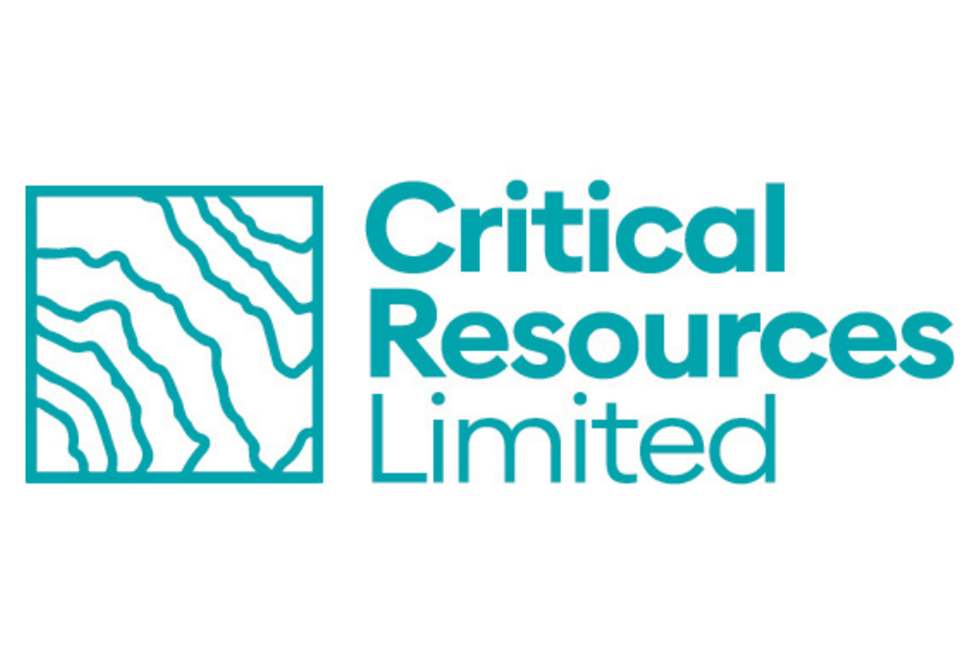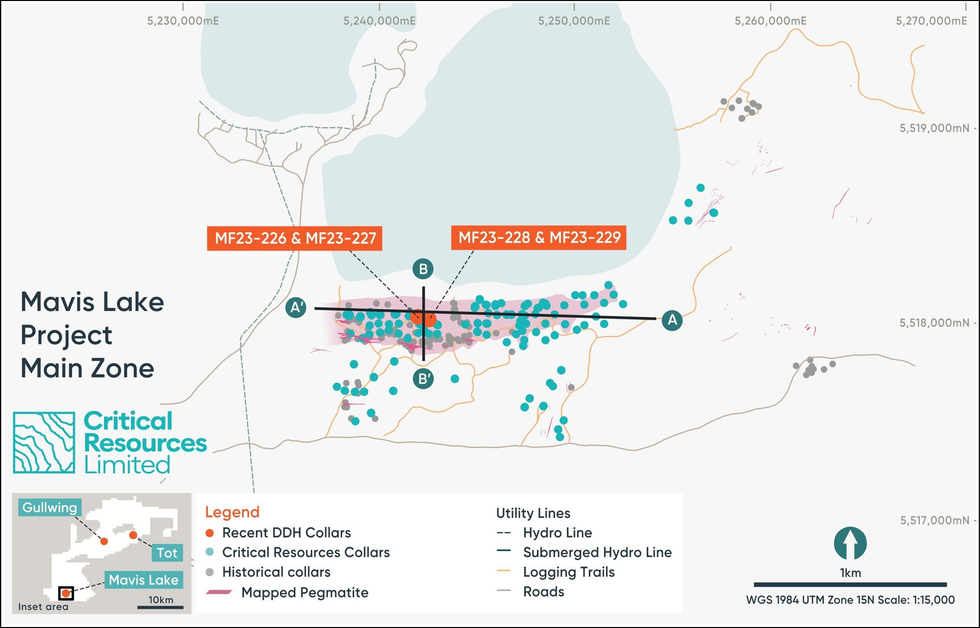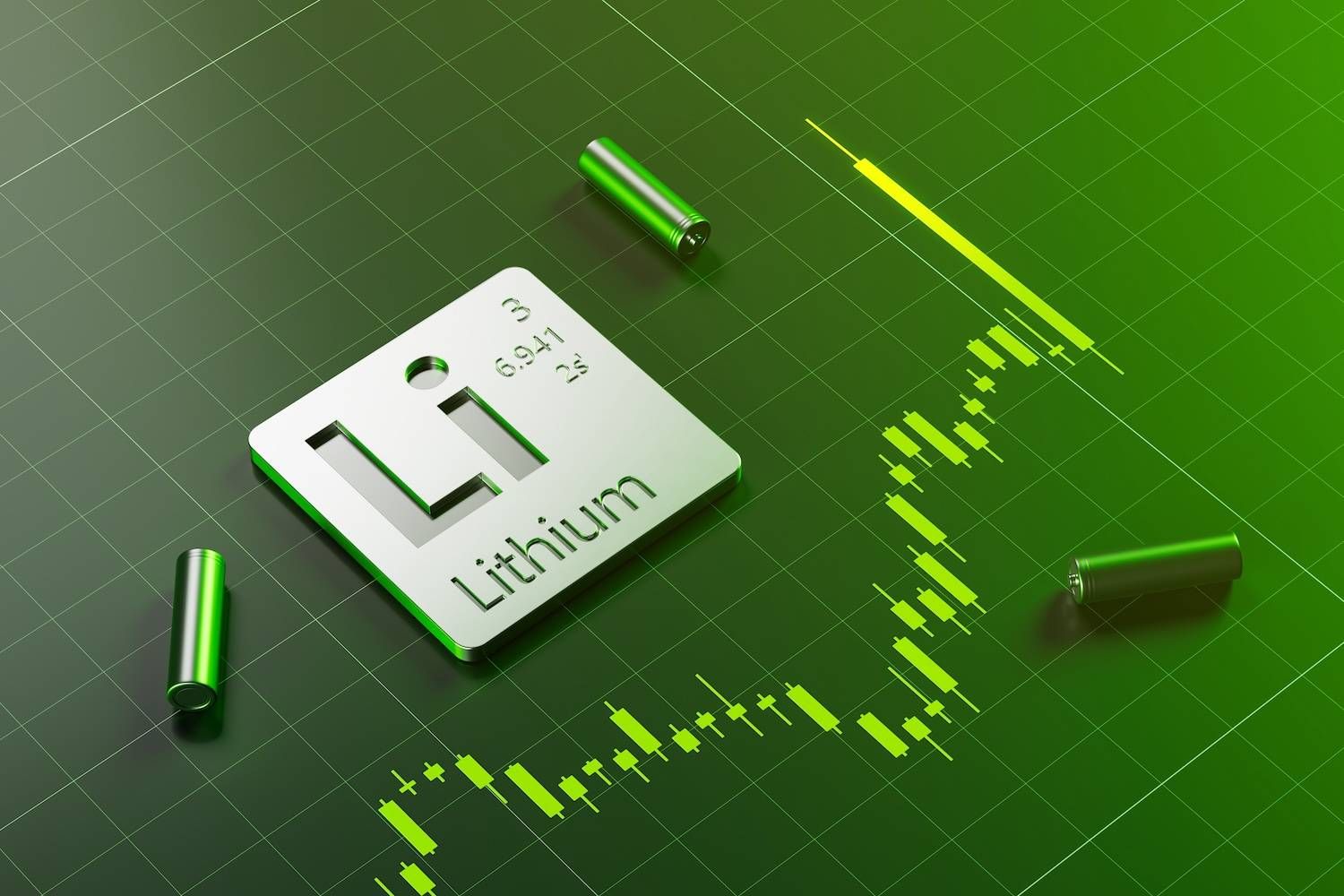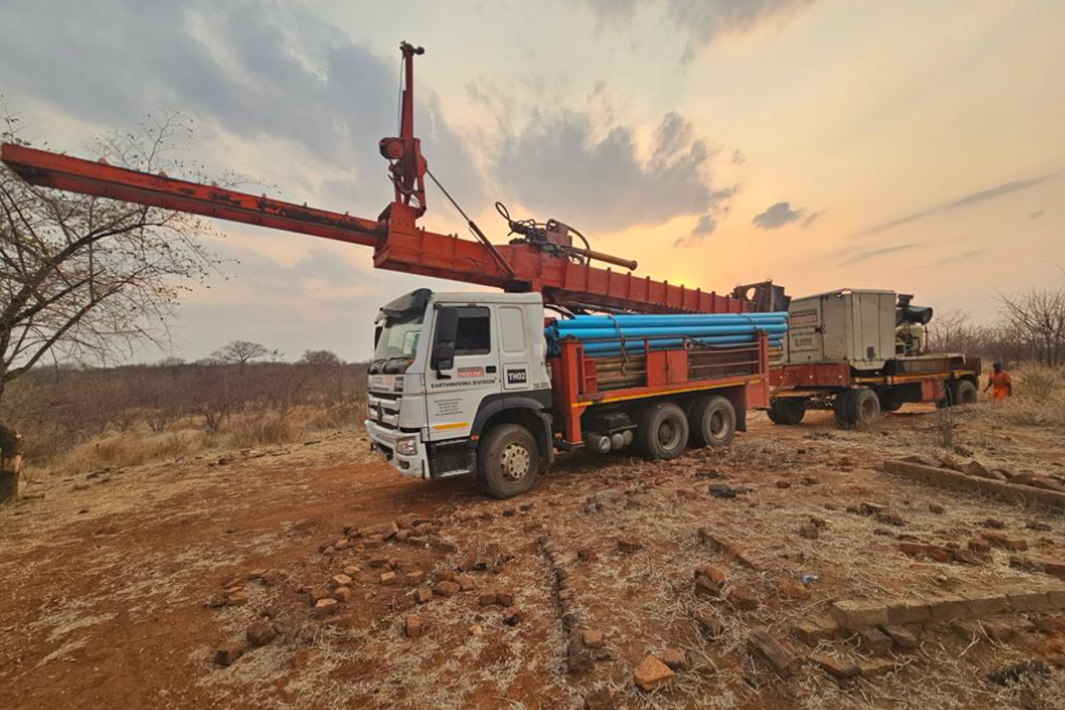
November 14, 2023
Lithium exploration and project developer Critical Resources Limited (ASX:CRR) (“Critical Resources” or “the Company”) is pleased to report further outstanding assay results from the Mavis Lake Lithium Project in Ontario, Canada.
Highlights
- Latest assay results from recent drilling at Mavis Lake have demonstrated continuity with previous, thick high-grade intercepts.
- The high-grade mineralisation within the Swell Zone starts from surface and extends over 1 kilometer in strike from east to west.
- Standout new assay results include:
- Drill-hole MF23-226 with a Swell Zone intercept of 31.55m @ 1.06% Li2O from 205.6m down-hole, and an additional ‘Lower Zone’ high-grade intercept of 20.7m @ 1.44% Li2O from at 339.3m down-hole.
- Multiple intercepts in drill-hole MF23-228, including:
- 16.8m @ 1.18% Li2O from 177.05m down-hole,
- 12.85m @ 1.39% Li2O from 208.1m down-hole, and
- 14.85m @ 1.25% Li2O from 333.25m down-hole.
- Multiple Project development workstreams continue including baseline environmental studies, metallurgical test work, mining studies and project economic analysis.
- Results pending from Main Zone drilling at Mavis Lake and drill-target generation field work at the Project’s northern prospects.
The latest assays have confirmed and extended the recently discovered Swell Zone and, when integrated with previous drilling results, show a thick, high-grade mineralised structure, starting from surface and extending over 1km in strike, sitting oblique to the current Mineral Resource Estimate (MRE).
1km Strike Length of Swell Zone
Recent drilling has established an important connection between previous drilling results, validating the Swell Zone discovery and demonstrating substantial Resource upside.
Current assays confirm a significant, 1km strike of high-grade mineralisation, starting at surface (refer to Figure 2) in the east and plunging gently to the west. Significant assays are shown in Table 1 and full exploration results are provided in Appendix 1.
The results confirm substantial thicknesses of high-grade lithium spodumene mineralisation. Importantly, when incorporating historical drilling the Company has now achieved tight drill spacing (approximately 50m spacing). The thickness and continuity of the Swell Zone, commencing from surface, is expected to contribute to positive future mining economics.
Much of the Swell Zone mineralisation sits outside the current Inferred MRE for Mavis Lake and presents as an immediate opportunity for immediate Resource growth.

Lower Zone Identified
Drill Holes MF23-226, MF23-227, MF23-228 and MF23-229 have all continued to intersect a “Lower Zone” of high-grade mineralisation, with a standout intercept of MF23-226 of 20.7 metres at 1.44% Li2O.
This Lower Zone was not identified in the Maiden Mineral Resource Estimate and presents as another immediate opportunity for Resource growth.
The Lower Zone can be seen in context relative to the Mavis Lake Main Zone intercepts in Figure 3.
Click here for the full ASX Release
This article includes content from Critical Resources, licensed for the purpose of publishing on Investing News Australia. This article does not constitute financial product advice. It is your responsibility to perform proper due diligence before acting upon any information provided here. Please refer to our full disclaimer here.
CRR:AU
The Conversation (0)
21 June 2022
Critical Resources
High-grade Lithium Portfolio, in a Tier 1 Location, Aligned with the World’s Green Energy Transition
High-grade Lithium Portfolio, in a Tier 1 Location, Aligned with the World’s Green Energy Transition Keep Reading...
5h
SQM, Codelco Seal Landmark Lithium Joint Venture in Salar de Atacama
Sociedad Quimica y Minera (SQM) (NYSE:SQM) and Codelco have finalized their long-awaited partnership, forming a new joint venture that will oversee lithium production in Chile’s Salar de Atacama through 2060.SQM announced on Saturday (December 27) that it has completed its strategic partnership... Keep Reading...
24 December
Altius Minerals to Expand Portfolio with C$520 Million Lithium Royalty Deal
Altius Minerals (TSX:ALS,OTCQX:ATUSF) is making a bet on a lithium market recovery, agreeing to acquire Lithium Royalty (TSX:LIRC) in a C$520 million deal that will expand its exposure to battery metals.Under a definitive agreement announced by the two companies on Monday (December 22), Altius... Keep Reading...
23 December
Liontown's First Tjiwarl Member Completes Apprenticeship at Kathleen Valley
Liontown (ASX:LTR,OTC Pink:LINRF) has reached a milestone at its Kathleen Valley operations, with Vaughan Harris becoming the first Tjiwarl community member to complete an apprenticeship with the company.“Being the first Tjiwarl apprentice to complete an apprenticeship here at Liontown feels... Keep Reading...
22 December
Lithium Market 2025 Year-End Review
The global lithium market endured a bruising 2025, with persistent oversupply and softer-than-expected electric vehicle (EV) demand driving prices for the battery metal to multi-year lows.Lithium carbonate prices in North Asia slipped below US$9,550 per metric ton in February — their weakest... Keep Reading...
11 December
Mining the Gap: 5 Forces Shaping North America’s Lithium Supply Chain
A convergence of industry investments, government initiatives and a shifting global trade dynamic is creating an environment ripe for the development of a North American battery supply chain, with lithium playing a leading role. These trends are reshaping the region’s industrial base and opening... Keep Reading...
10 December
Rock Bottom: Strategic Window for Ground-level Lithium Investment
When lithium prices hit bottom, savvy investors know that’s exactly where the next big discovery begins — literally. Beneath the surface of global markets and remote exploration grounds, new opportunities are forming in the wake of a sharp price reset and renewed geopolitical urgency.Recent... Keep Reading...
Latest News
Interactive Chart
Latest Press Releases
Related News
TOP STOCKS
American Battery4.030.24
Aion Therapeutic0.10-0.01
Cybin Corp2.140.00






